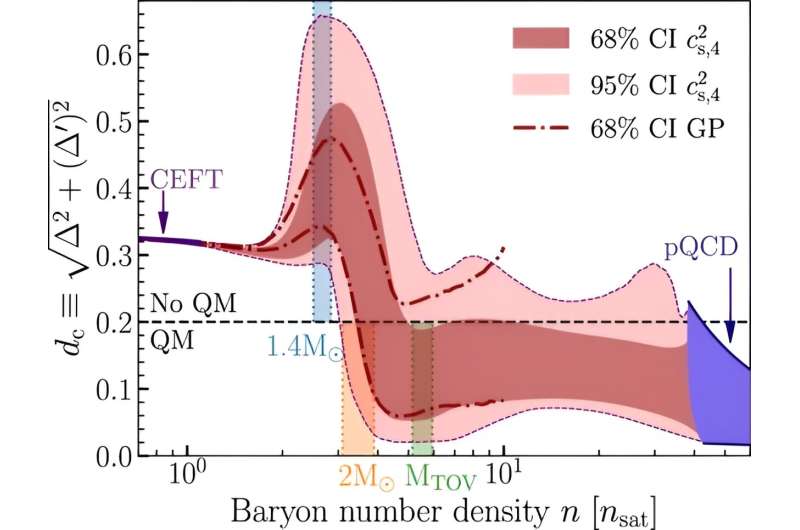The largest neutron stars have cores of quark matter
- January 6, 2024
- 0
Atoms consist of three things: protons, neutrons and electrons. Electrons are a type of fundamental particle, but protons and neutrons are complex particles made up of up and
Atoms consist of three things: protons, neutrons and electrons. Electrons are a type of fundamental particle, but protons and neutrons are complex particles made up of up and

Atoms consist of three things: protons, neutrons and electrons. Electrons are a type of fundamental particle, but protons and neutrons are complex particles made up of up and down quarks. Protons have 2 up and 1 down, neutrons have 2 down and 1 up. Due to the interesting nature of the strong force, these quarks are always bound together, so they can never be truly free particles like electrons, at least not in the vacuum of empty space. But a new study Nature Communication He found that they could be released from the hearts of neutron stars.
Neutron stars are the remnants of massive stars. This is the last desperate attempt to prevent the star’s core from collapsing into a black hole. Once all the nuclear fuel of the dense core is exhausted, the only thing that can resist gravity is the quantum pressure of the neutrons. And here everything gets complicated.
A simple neutron star model assumes that its core is full of neutrons on the verge of collapse. They can repel each other with tremendous energy, but they are still neutrons. The quarks within them are bound too tightly to allow neutrons to decay. But some argue that at this gravitational limit, neutrons can relax and allow their quarks to dissolve into a kind of quark soup. This means that neutron stars may have a dense quark core.
Unfortunately, we cannot perform experiments on neutron stars or create the dense nuclear matter of a neutron star on Earth, but we do have some ideas about how dense nuclear matter behaves through the equation of state. An equation of state is a way to calculate the mass properties of a material, and for neutron stars this equation of state is known as the Tolman-Oppenheimer-Volkov (TOV) equation. The only problem is that TOV is an incredibly complex equation, and if you use it to calculate whether neutron stars have quark nuclei, you’ll get the answer… maybe.

For this new study, the team took a different approach. Instead of botching equation of state calculations, they took observational data on the mass and size of neutron stars and applied Bayesian statistics. This statistical method examines observation patterns and makes subtle but powerful predictions of possible scenarios. In this case, if neutron stars have quark nuclei, they are slightly denser than neutron stars without quark nuclei. Since small neutron stars most likely do not have quark nuclei, whereas the largest neutron stars probably do have quark nuclei, the deviation in the mass-density ratio should show up in Bayesian analysis.
The team found that massive neutron stars with masses greater than two suns have about an 80-90% chance of having quark nuclei. It turns out that the real question is not whether quark stars exist, but where the transition between quark stars and ordinary neutron stars occurs.
To be fair, this analysis was based on a fairly small sample of data. We currently do not know both the mass and radius of most neutron stars, but this will change over time. With more data we will be able to determine the critical phase shift between quark matter and dense neutron matter. But for now, we can be pretty sure that some neutron stars are much stranger than we thought.
Source: Port Altele
As an experienced journalist and author, Mary has been reporting on the latest news and trends for over 5 years. With a passion for uncovering the stories behind the headlines, Mary has earned a reputation as a trusted voice in the world of journalism. Her writing style is insightful, engaging and thought-provoking, as she takes a deep dive into the most pressing issues of our time.